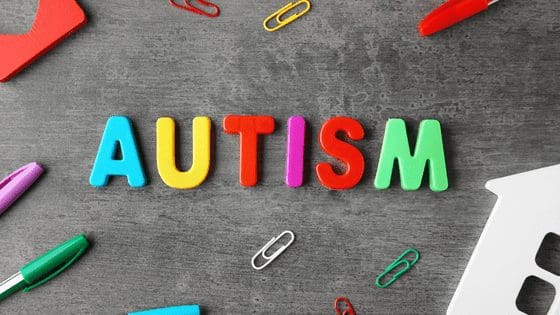Unconscious bias is a widespread and persistent problem in the workplace, and it impacts us all. Regardless of whether you are an employee, manager, or business owner, it is highly likely that you have been affected by unconscious bias at some point. But what exactly is unconscious bias, and why can it be so detrimental in the workplace? In this article, we’ll explore precisely what unconscious bias is, how it can manifest itself in the workplace, and possibly most importantly, strategies you can apply to address and avoid unconscious bias.
What unconscious bias is
At a basic level, unconscious bias is defined as making judgements or decisions based on our own assumptions, prior experience, or interpretations while not being aware that we are doing it. As it unconsciously influences our decisions and behaviours, it can lead to discrimination and inequality in the workplace.
Unconscious biases are present in everyone. To understand this, let’s look at where unconscious bias comes from.
Where does unconscious bias come from?
Understanding where unconscious bias comes from is the first step in addressing it, and it starts with our brain.
The human brain constantly seeks patterns and connections in the world around us to make sense of them. This natural occurrence typically leads to us forming biases and stereotypes, which can influence our perceptions and behaviour. For example, studies have shown that we are attracted to people with familiar features because we consider them safe and unlikely to cause harm. This doesn’t mean we have to know or have seen the person before, but the person may have familiar physical characteristics or personality traits. This type of unconscious bias is known as Affinity bias.
Unconscious biases can also be formed through past experiences and exposure to certain situations. For example, suppose we grew up in a community of people of the same ethnicity as ourselves. In that case, we may have a bias towards people of ethnicities different to our own.
Another cause of unconscious bias is the information we consume, particularly from the media. The media can shape our views of particular groups of people by reinforcing stereotypes and perpetuating misinformation. For example, if the media consistently portrays women in a certain way, we may unconsciously begin to believe these stereotypes are true.
It is believed that unconscious bias has been a survival tool for humans since the dawn of time as we struggled to distinguish rapidly between allies and enemies.
What unconscious bias it

Making snap judgements based on our assumptions is part of human cognition, as people tend to believe they are fairer or less prejudiced than the average person. Research has shown that this can be due to attribution bias, as we have a subconscious favour toward people we feel are inside our own ‘group’, viewing them as safer and more trustworthy to be around. Therefore, we have a negative bias towards those we consider part of an outsider group. This underlying bias allows people to feel confident when making decisions.
Additionally, our brain has a natural tendency to simplify information, which can result in unconscious bias. This is called “cognitive ease”, which can lead to the creation of stereotypes and mental shortcuts that might not accurately reflect the reality of certain situations or individuals.
Understanding and acknowledging that unconscious bias is a natural and normal part of the human experience makes it easier to accept that we all have biases. Furthermore, by understanding where unconscious bias comes from, we can begin to recognise and take responsibility for our own biases and take proactive steps to overcome them.
How many types of unconscious bias are there?
There are many different types of unconscious biases that we can hold. In addition to affinity bias, some of the most common are racial bias, gender bias, age bias, confirmation bias and authority bias. For a more complete list, read our article, 19 Examples of Conscious and Unconscious Bias in the Workplace contains a more complete list of unconscious biases and how to overcome them.
How to avoid unconscious bias in the workplace
Equality, diversity, and inclusion are becoming more important than ever in the eyes of both companies and employees. In 2022 up to 76% of workers reported valuing diversity in their workplace, valuing the positive impact it can have on innovation and problem-solving. In response, companies are focusing more on equality, diversity, and inclusion. This includes taking steps to avoid unconscious bias occurring in the workplace and addressing issues of discrimination and unconscious bias when they become apparent.
Unconscious bias in the workplace

If you’re looking to do the same, here are some strategies for identifying, addressing, and overcoming unconscious bias:
Unconscious bias training
As we’ve demonstrated, unconscious bias is a complex topic and understanding what unconscious bias is and how it can manifest itself outwardly is the first step to addressing it. Unconscious bias training is one of the most effective strategies to help do this. This type of training helps you and your employees become aware of their unconscious biases and provides them with the tools to address them and prevent their biases from negatively impacting their behaviours and actions.
Diversifying the workplace
Creating a more diverse and inclusive work environment can reduce the chance of bias occurring in the first place. This includes:
- Review all existing company policies and make appropriate amendments. For example, ensure all policies include inclusive language.
- Identify, create, and roll out additional policies that promote diversity and inclusion. For example, Menopause, Flexible Working Policies.
- Seeking employee feedback to ensure employees feel included and taking action where they do not.
- Ensure your recruitment procedures encourage diversity, for example, by attracting a diverse range of candidates by using inclusive language in job adverts.
- Ensure interview procedures are inclusive—for example, blind hiring practices and providing candidates with questions in advance.
- Review and update the internal pay review, bonus and promotion process to ensure you provide opportunities for underrepresented groups to advance in their careers.
In summary, unconscious bias is an unavoidable attribute in everyone. However, efforts to mitigate the effects of unconscious bias will help prevent it from negatively impacting behaviours.
It is vital to remember that addressing unconscious bias is a continuous process; it is not a one-off event, and there is no quick fix. It requires consistent and deliberate effort from everyone within the business. In addition to applying the strategies above, people must be open to acknowledging and taking responsibility for their mistakes, willing to learn from them and take action to improve and grow. But organisations can move closer to achieving true equity by creating a culture of awareness, inclusivity, and continuous improvement.
It’s time to take action and break through the confusion and misinformation surrounding unconscious bias in the workplace. Contact us today, and let’s work together to address unconscious bias in your workplace.
Published Monday 16th January 2023




